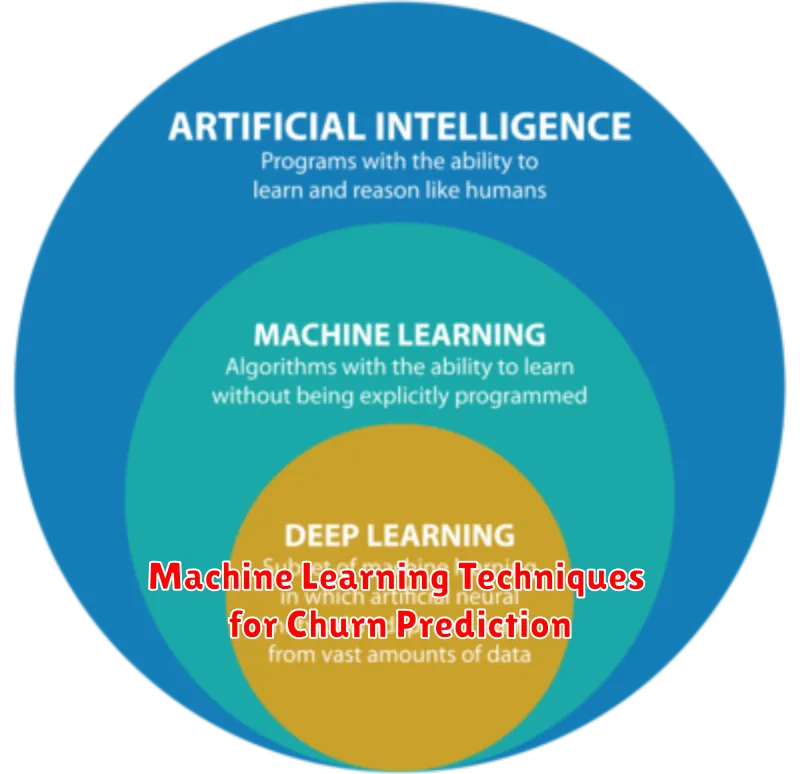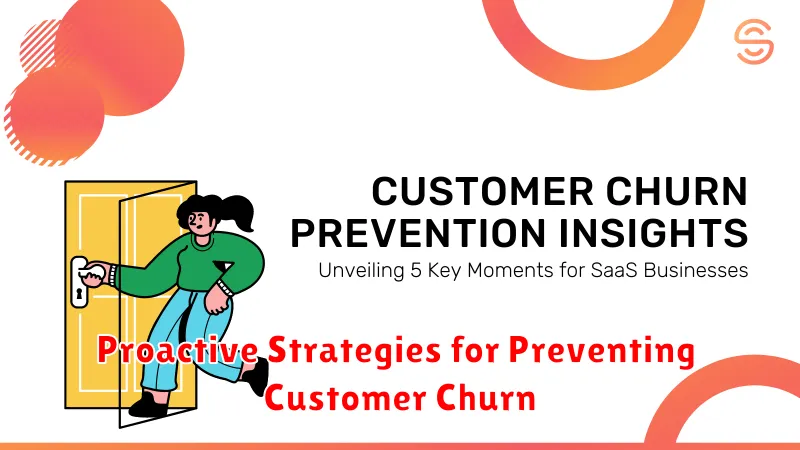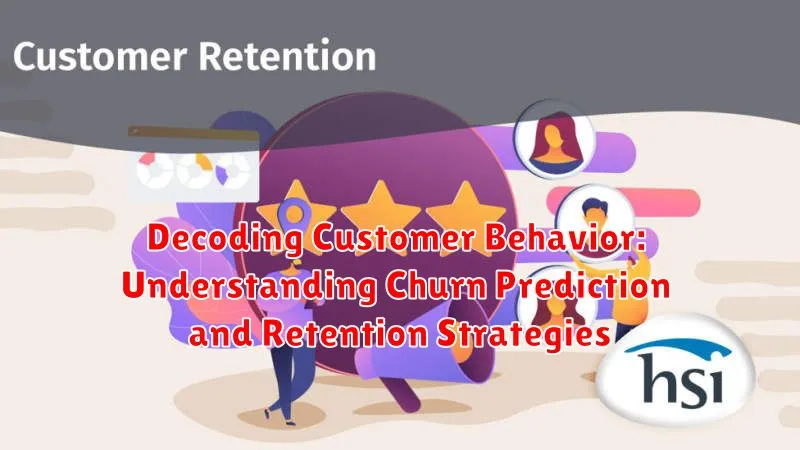In today’s fiercely competitive business landscape, understanding and decoding customer behavior is paramount for sustainable growth and profitability. One of the most critical aspects of this understanding revolves around churn prediction – the ability to anticipate which customers are likely to discontinue their service or product usage. By leveraging sophisticated analytical techniques and predictive modeling, businesses can proactively identify at-risk customers and implement targeted retention strategies. Mastering this area is no longer optional; it’s a necessity for any organization aiming to thrive in the long term.
This article delves into the intricate world of customer churn, exploring the underlying factors that contribute to customer attrition and outlining effective retention strategies to combat it. We will examine the methodologies behind churn prediction, including data analysis techniques, machine learning algorithms, and the interpretation of key performance indicators (KPIs). Furthermore, we will discuss practical approaches to improving customer satisfaction, enhancing customer loyalty, and ultimately reducing churn rates across various industries. Gaining insights into these strategies empowers organizations to build stronger customer relationships and maintain a competitive edge in the global market.
What is Churn Prediction and Why Does it Matter?
Churn prediction is a predictive analytics technique used to identify customers who are likely to discontinue using a product or service. It involves analyzing historical data to forecast which customers are at the highest risk of “churning,” or defecting to a competitor.
The significance of churn prediction lies in its potential to significantly impact a business’s profitability and long-term sustainability. Acquiring new customers is often considerably more expensive than retaining existing ones. By accurately predicting churn, businesses can proactively implement targeted retention strategies to keep valuable customers from leaving.
Here’s why churn prediction matters:
- Reduces Revenue Loss: By preventing churn, businesses can maintain their revenue streams.
- Improves Customer Lifetime Value: Retaining customers extends their relationship with the company, increasing their overall value.
- Optimizes Marketing Spend: Targeted retention efforts are more cost-effective than broad acquisition campaigns.
- Enhances Customer Loyalty: Proactive engagement demonstrates that the company values its customers.
Key Factors that Contribute to Customer Churn
Understanding the drivers of customer churn is crucial for developing effective retention strategies. Several key factors can contribute to a customer’s decision to discontinue using a product or service.
Poor Customer Service: Inadequate or unresponsive customer support is a significant driver of churn. Customers expect timely and helpful assistance when they encounter issues.
Lack of Engagement: Customers who are not actively engaged with a product or service are more likely to churn. This can stem from infrequent use, a lack of perceived value, or a disconnect with the brand.
Pricing Issues: Customers may churn if they perceive the price as too high relative to the value they receive. Unexpected price increases can also lead to dissatisfaction and churn.
Competitive Offerings: The availability of better or cheaper alternatives from competitors is a major factor. Customers may switch if they find a more appealing product or service elsewhere.
Product/Service Issues: Frequent bugs, performance problems, or a lack of desired features can frustrate customers and lead them to seek alternatives.
By identifying and addressing these key factors, businesses can proactively reduce churn and improve customer retention rates.
Data Collection and Preparation for Churn Prediction Models
The foundation of any successful churn prediction model lies in the quality and relevance of the data it’s trained on. This phase involves a systematic approach to gathering and preparing data from various sources to ensure its suitability for machine learning algorithms. Data collection is the initial step, where relevant information about customers is accumulated.
Data Sources
Key data sources often include: CRM systems (customer relationship management), transactional databases, website analytics, customer service interactions, and survey responses. The data gathered should provide a comprehensive view of customer behavior, engagement, and satisfaction.
Data Preprocessing
Once collected, the data undergoes rigorous preprocessing. This involves cleaning the data to handle missing values, inconsistencies, and outliers. Furthermore, features might be transformed to be more suitable for the chosen machine learning model. Feature engineering, creating new features from existing ones, can also improve model performance. Finally, the dataset is typically split into training and testing sets to evaluate the model’s ability to generalize to unseen data.
Machine Learning Techniques for Churn Prediction

Several machine learning techniques are employed for churn prediction, each offering unique advantages. Logistic Regression is a commonly used, interpretable method that predicts the probability of churn based on various factors. Decision Trees and Random Forests offer non-linear modeling capabilities, identifying complex relationships between features and churn.
Support Vector Machines (SVM) are effective in high-dimensional spaces and can model non-linear decision boundaries. Neural Networks, particularly deep learning models, can capture intricate patterns in large datasets. The choice of algorithm depends on the specific dataset, business context, and desired level of interpretability.
Model evaluation metrics such as precision, recall, F1-score, and AUC-ROC are crucial for assessing the performance of churn prediction models. Fine-tuning hyperparameters and employing techniques like cross-validation are essential for optimizing model accuracy and generalization ability.
Implementing a Churn Prediction Model: A Step-by-Step Guide
Implementing a churn prediction model requires a structured approach. The following steps provide a practical guide:
- Define Objectives: Clearly define what constitutes churn within your business context. Establish specific, measurable, achievable, relevant, and time-bound (SMART) goals for churn reduction.
- Data Acquisition and Preparation: Collect relevant customer data from various sources. Clean, transform, and prepare the data for model training. This involves handling missing values, outliers, and feature scaling.
- Model Selection and Training: Choose an appropriate machine learning algorithm based on your data and business requirements. Train the model using historical data.
- Model Evaluation: Assess the model’s performance using appropriate metrics like precision, recall, F1-score, and AUC. Fine-tune the model parameters to optimize performance.
- Deployment: Integrate the trained model into your existing systems. This could involve creating an API endpoint or incorporating it into your CRM platform.
- Monitoring and Maintenance: Continuously monitor the model’s performance and retrain it periodically with new data to maintain accuracy.
Successful implementation also includes documenting each step meticulously and establishing a clear communication plan across teams.
Customer Segmentation for Targeted Retention Strategies
Customer segmentation is a critical component of successful retention strategies. By dividing customers into distinct groups based on shared characteristics, businesses can tailor their retention efforts for maximum impact. This targeted approach is more effective than a one-size-fits-all strategy.
Benefits of Customer Segmentation
Segmentation allows for:
- Personalized messaging: Crafting communications that resonate with specific customer needs and preferences.
- Targeted offers: Developing incentives and promotions that are relevant to each segment’s interests.
- Improved resource allocation: Focusing retention efforts on the most valuable or at-risk customer groups.
Segmentation Criteria
Common segmentation criteria include:
- Demographics: Age, gender, location, income.
- Behavior: Purchase history, website activity, product usage.
- Psychographics: Values, interests, lifestyle.
By understanding the unique needs and behaviors of each segment, companies can develop highly effective retention campaigns that improve customer loyalty and reduce churn.
Personalized Retention Offers and Incentives
Personalized retention offers and incentives are crucial for effectively combating customer churn. These strategies involve tailoring specific offers to individual customer needs and preferences, thereby increasing the likelihood of them remaining loyal.
Creating Effective Personalized Offers
To develop compelling offers, businesses must leverage data insights gained from churn prediction models and customer segmentation. Understanding a customer’s usage patterns, purchase history, and engagement levels allows for the creation of highly relevant incentives.
- Tiered Discounts: Offering escalating discounts based on customer loyalty or spending.
- Exclusive Content: Providing access to premium features or content.
- Early Access: Granting early access to new products or services.
- Personalized Recommendations: Suggesting products or services based on past purchases.
The key to success lies in demonstrating that the business understands the customer’s unique needs and is committed to providing value.
Measuring the Effectiveness of Retention Campaigns
Determining the success of retention campaigns is crucial for optimizing resource allocation and maximizing customer lifetime value. This involves tracking key performance indicators (KPIs) and analyzing the impact of implemented strategies.
Key Metrics for Evaluation
Several metrics can be used to assess campaign effectiveness:
- Churn Rate Reduction: Measuring the percentage decrease in churn rate among targeted customer segments.
- Retention Rate Improvement: Tracking the increase in the percentage of customers retained over a specific period.
- Customer Lifetime Value (CLTV): Assessing the long-term revenue generated by retained customers.
- Return on Investment (ROI): Calculating the profitability of the retention campaign by comparing gains to costs.
- Customer Satisfaction (CSAT) Scores: Monitoring changes in satisfaction levels through surveys and feedback mechanisms.
By analyzing these metrics, businesses can gain valuable insights into the effectiveness of their retention campaigns and make data-driven decisions to improve their strategies.
Proactive Strategies for Preventing Customer Churn

Proactive churn prevention focuses on identifying and addressing potential issues *before* they lead to customer attrition. This approach shifts the focus from reactive measures to preventative actions.
Key Proactive Strategies:
- Enhanced Onboarding: Implement a robust onboarding process to ensure new customers quickly understand and derive value from your product or service.
- Regular Engagement: Maintain consistent communication with customers through newsletters, tutorials, or check-in calls.
- Performance Monitoring: Track key performance indicators (KPIs) related to customer usage and satisfaction to identify early warning signs of churn.
- Value Communication: Regularly highlight the benefits and value your product or service provides to the customer.
- Education and Support: Offer comprehensive training and easily accessible support channels to address customer inquiries and issues promptly.
By proactively engaging with customers and addressing their needs, businesses can significantly reduce churn rates and build stronger, more loyal customer relationships.
The Role of Customer Feedback in Improving Retention
Customer feedback is an invaluable resource for understanding customer sentiment and identifying areas for improvement. It provides direct insights into customer experiences, expectations, and pain points, which are critical for developing effective retention strategies.
By actively soliciting and analyzing feedback, businesses can gain a deeper understanding of why customers choose to stay or leave. This data can be gathered through various channels, including:
- Surveys: To collect structured data on customer satisfaction and preferences.
- Reviews: To understand public perception and identify areas for immediate attention.
- Direct Feedback: Communication channels like phone, email, or chat, for spontaneous feedback and complaint resolution.
- Social Media Monitoring: To track brand mentions and identify trends in customer sentiment.
Analyzing this feedback allows businesses to identify patterns, address issues proactively, and make informed decisions to improve the customer experience, thus enhancing retention rates. Acting on customer feedback demonstrates that their opinions are valued and contribute to a positive relationship.

